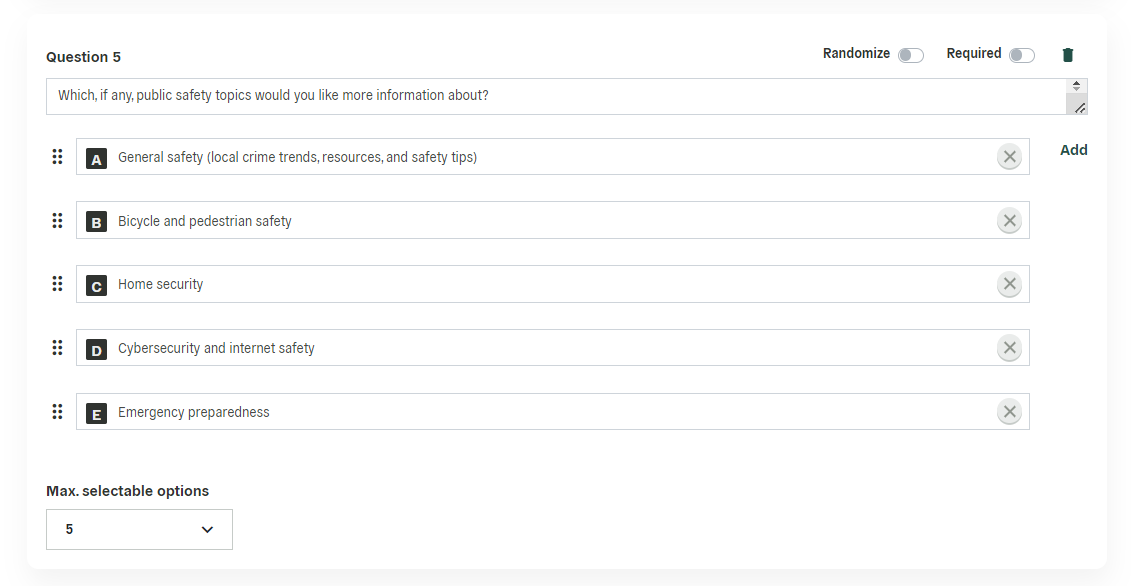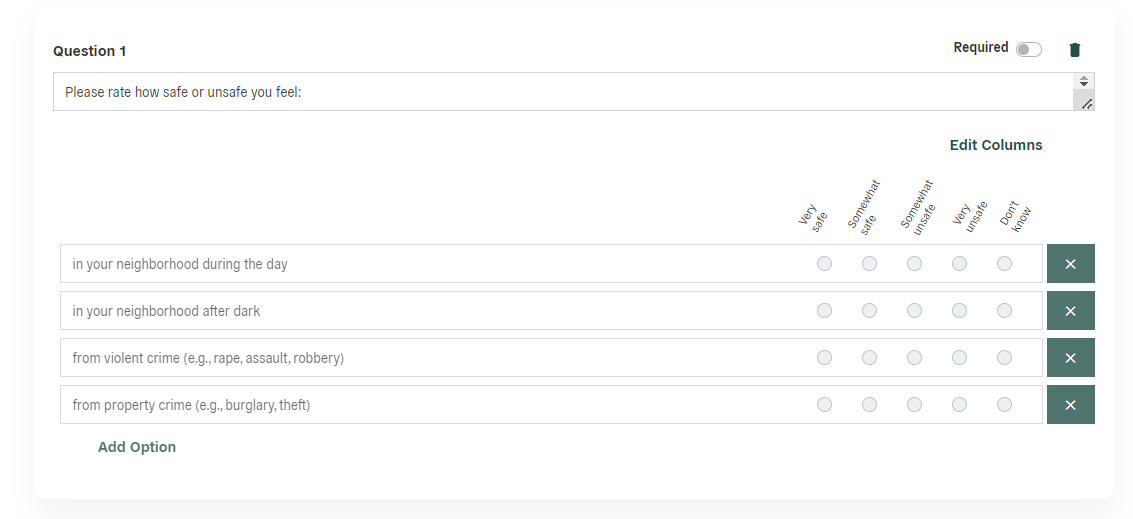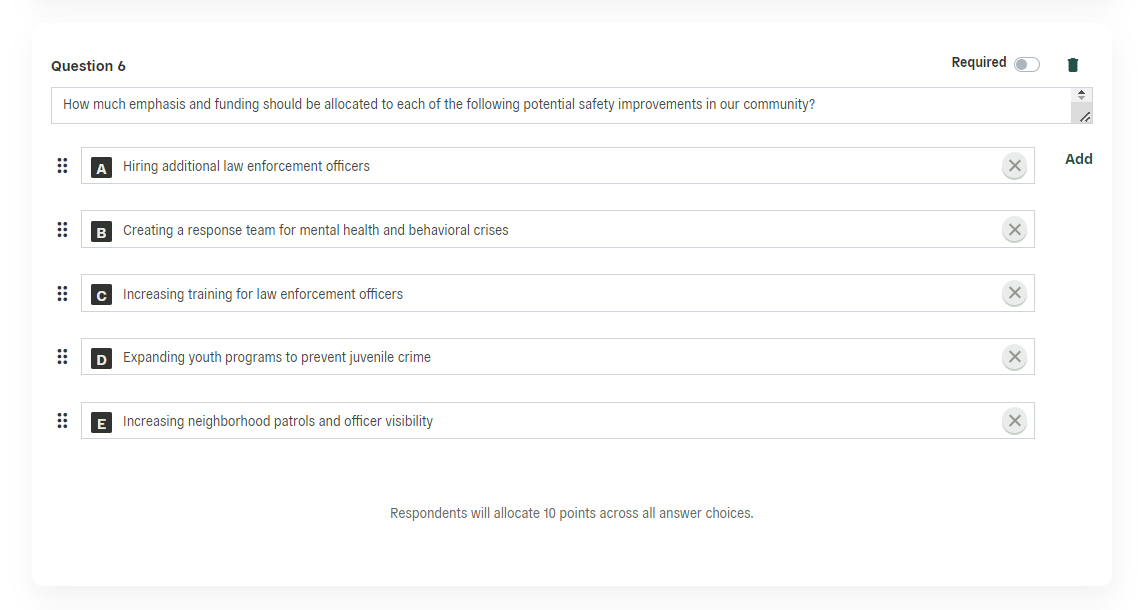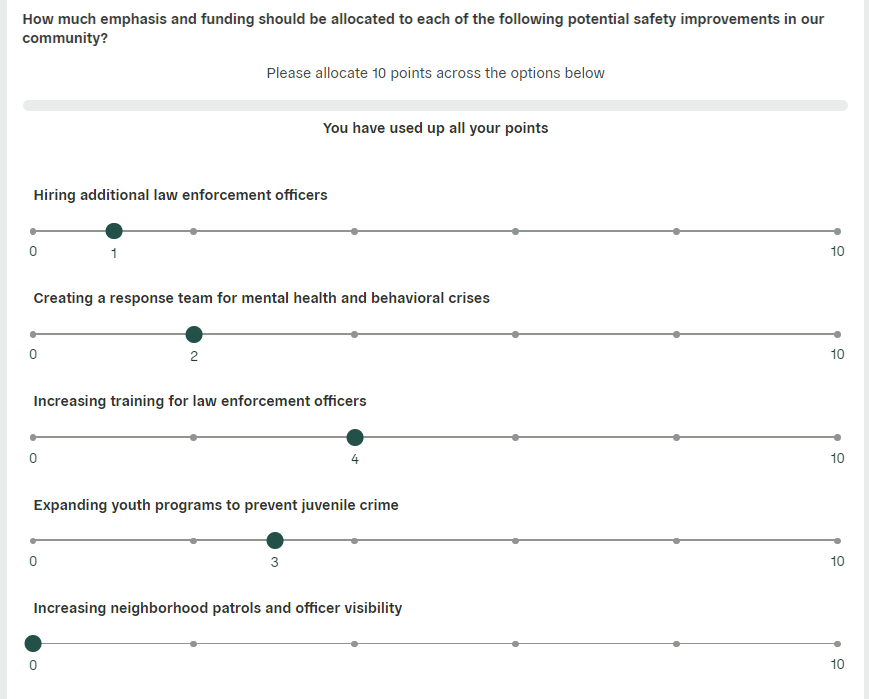When you are programming a survey or poll, you will need to determine which question type(s) to use. For a survey, you can choose from four types of survey questions. Polls offer three question types (all of the below EXCEPT grid style). See more details and examples of each below.
Free Text
Free-text (sometimes called open response) questions allow a respondent to write an answer in their own words. Results from these questions will appear in a word cloud or can be viewed in full within a downloaded CSV once the survey has closed. While free-text questions can provide valuable qualitative data and context, we recommend using them sparingly, as they tend to be more difficult to analyze and increase respondent burden if overused.

Multiple Choice
Perhaps the most popular question type, multiple-choice questions allow respondents to select one or more options from a provided list. The “Max selectable options” number beneath the answer choices will determine how many options a respondent may choose; selecting the highest number allows respondents to select all answers that apply (as shown in the image below), while limiting to one (the default) will force respondents to choose the most relevant (or highest priority) response.

Grid Choice
You can use a grid question to group numerous related multiple-choice questions and ask them more efficiently. Often, grid questions will include a rating scale (sometimes a Likert scale) to measure the range of respondents’ opinions, attitudes, or perceptions. This question type can pack a punch, gathering a lot of quantitative data in less space and without overwhelming respondents. Note that this question style is not available in polls.

Point Allocation
Point allocation questions ask respondents to assess the relative value of various options. They are often used to assess budget preferences or priorities for different service areas. Because respondents must allocate 10 points among each of the answer options provided, we strongly recommend limiting the amount of possible options to fewer than 10. Less is more, in this case!


What respondents will see when answering a point allocation question
Section Header
Although not a question type, you’ll also see “Section Header” as an option on the question type dropdown menu. Section headers offer a way to add blocks of text in between question sets. You may want to use a section header to mark a section on “Demographics”, and explain the value of these questions (and assure respondents of their privacy). Or you could use section headers to separate your survey questions into categories, providing additional context (including images, links to more information, etc.).
Fun tip: There is an automatic “thank you” message that appears for respondents at the end of each survey, so no need to create one yourself!
FAQs!
Can I set character limits on free text questions?
At the moment, no; residents can write as much or as little as they want. We find that most respondents keep it brief, thankfully! There is also not a character limit on comments in polls.
Is there a limit to the total number of multiple choice answer options?
In a poll, you can include up to seven different answer choices. Within a survey, Polco allows up to 50 different choices.